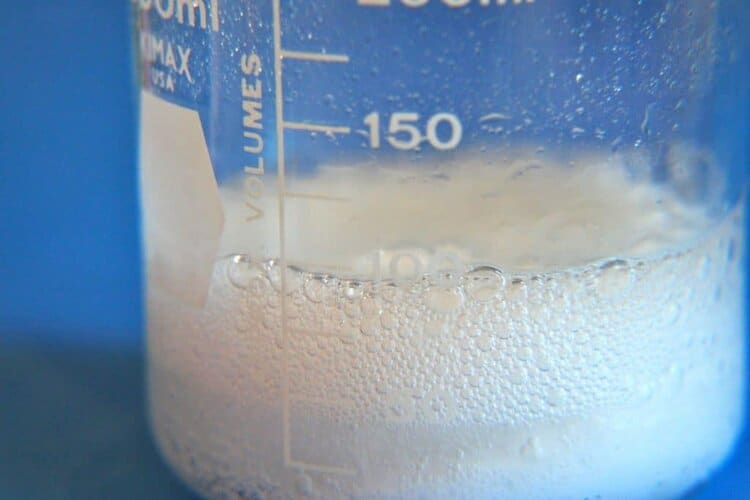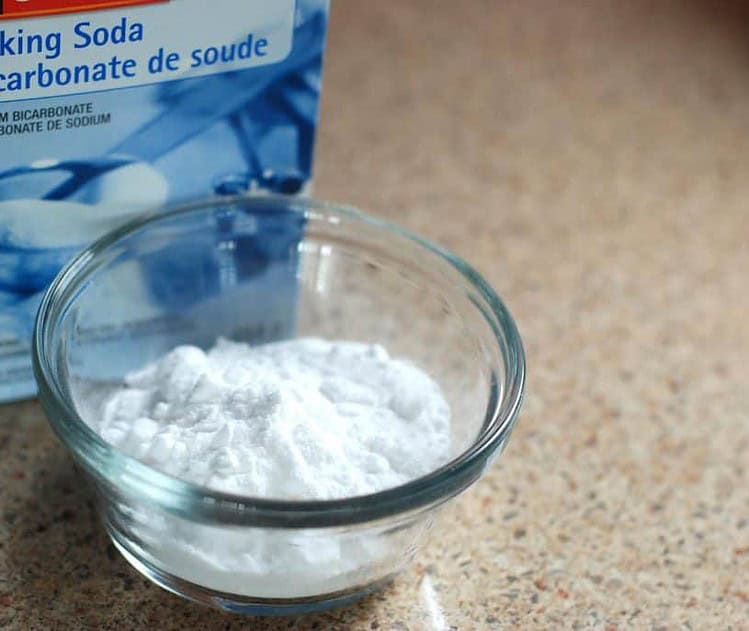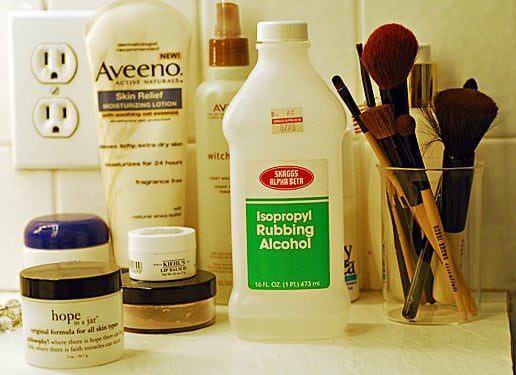Vinegar and baking soda are the most effective ingredients to remove hair dye stains. First, combine vinegar and baking soda evenly until you make a thick paste. Next, dip a microfiber towel into the paste and use it to wipe the stain until it disappears.
Were you dyeing your hair and accidentally stained your cabinet with dye? If the answer to this question is yes, then you are in the right place!
We understand how disheartening a hair dye stain on your cabinet can be. No matter the color of the dye, it ruins the look of your cabinet and is difficult to ignore. Also, it doesn’t feel very pleasant when you invite a guest over.
Most of the time, they will see the stain and wonder why you did not do anything about it. This situation is never good because homeowners take pride in their houses and want their guests to realize it.
Getting rid of hair dye from your cabinets doesn’t have to be rocket science, and it doesn’t have to cost you an arm and a leg.
If one method doesn’t work, you can quickly pivot and try another until you achieve your goal.
In this guide, we’ll teach you 7 unique methods you can try to remove hair dye from your cabinets.

7 Practical Ways to Remove Hair Dye from Cabinets
If hair dye gets on your cabinet, it is recommended that you act fast. Waiting too long will only make your task more difficult, or you may not be able to remove the dye at all.
Before trying the methods below, the prerequisite rule for each one is to absorb the wet dye on the cabinet with a paper towel.
Then, once no damp dye is left, you can try one of our strategies to remove the rest of the stain.
Method 1: Magic Cleaning Eraser
The most commonly used strategy is utilizing the magic cleaning eraser to eliminate dye stains.
First, you will need a small container with warm water.
Dip the eraser in the bucket of water and use it to scrub the stain exhaustively. Keep going until it is no longer visible. Do not try this technique on a cabinet with varnish coating to avoid scratches.
We suggest you test a small section of your cabinet that is not visible with a cleaning eraser. Then you can target the intended area, knowing you will not damage your furniture.
If you still see the dye, you can move on to another method.
Method 2: Combine Baking Soda and White Vinegar
Mix 1 tablespoon of baking soda and ½ a tablespoon of white vinegar.
This combination does not have to be exact, and you can experiment with the amounts that work best for you. All you have to make sure of is that the paste has a creamy texture.
Apply the solution evenly over the stain with your finger and give it around 15 minutes or until you see it has settled. Then, wipe the paste off your cabinet with a fresh paper towel. Resume this procedure a few more times until the dye stain is gone.
If this method does not work, you can try the next one.
Method 3: Baking Soda and Lemon Juice
You will notice that baking soda is a necessary ingredient in all the methods so far in this guide. It is powerful when mixed with an acidic liquid.
This method’s first step is adding 2 tablespoons of lemon juice and mixing it with the same amount of baking soda. Next, put some of this blend on a microfiber cloth and wipe the stain with a medium level of strength until you no longer can see it on the cabinet.
The following method will most probably work if this one is not helpful for you.
Method 4: Detergent and Baking Soda
This method is helpful for most stains, and the reason is that it is highly effective.

Pour 16 ounces of cold water into a container or a bowl and apply a tablespoon of detergent with the same amount of baking soda. The brand of the detergent you pick is not important. Blend all 3 ingredients for 1 minute.
Next, put a towel or a brush in the bowl and let it sit until it’s covered in soapy water.
Remove the towel from the bowl and scrub the stain until you can’t see it. You will have to use your intuition when it comes to how strong you should scrub but put more muscle into it depending on how stubborn the stain is to remove.
Method 5: Dish Soap and Baking Soda
The steps here are very similar to the previous methods. Add a tablespoon of dish soap and baking soda to a bowl. Pour 16 ounces of warm water to make your cleaning blend.
Grab a microfiber cloth and dip it into your cleaning liquid mixture for 1 minute. Then, remove it from the bowl and softly wipe the area on the cabinet with the stain. There is a minimal chance that it could damage your surface, but we recommend testing it first.
Try these steps a few times and move on if you don’t see any results.
Method 6: Hydrogen Peroxide and Baking Soda
Peroxide is a strong chemical solution, and we suggest you always wear a mask when using it in your home.
Only try it if all hope is lost with the other methods. Also, ensure you know your cabinet can handle this chemical because if it can’t, permanent damages are inevitable.
Combine your hydrogen peroxide with baking soda and use an even amount of each ingredient. When the paste is dense enough, you will know you are ready to go.
Be sure to test the solution on a hidden area of your cabinet before using it on the stain. This final step is crucial because you don’t want to cause any permanent damage.
Method 7: Rubbing Alcohol

This method might not be effective on all cabinet stains, but it is good to test to have as many options as possible. It requires you to have isopropyl alcohol which is optimal for cleaning and killing bacteria from many surfaces.
Put a towel or cloth in the isopropyl solution and use it to wipe the stained surface vigorously. Don’t stop until the stain is eradicated from your cabinet.
FAQs on How to Get Hair Dye Off Cabinets
Does Magic Eraser remove hair dye from cabinets?
Yes, it does, and all you need to do is dip it in water until bubbles form. Then, use it to wipe down the stain until it is gone.
Does vinegar remove hair dye from cabinets?
Yes, vinegar removes hair dye from cabinets because its acidic nature makes for an effective cleanser. It is used for various other stains and not only hair dye.
